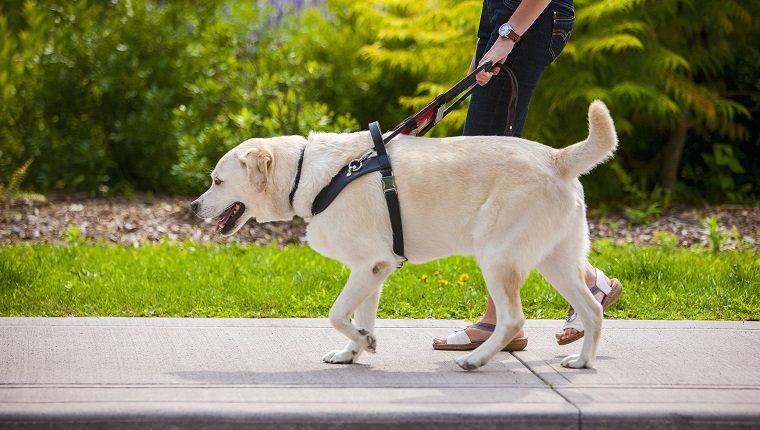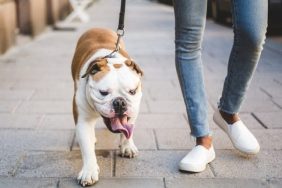A dog harness can have many purposes. Some dog harnesses are meant for everyday use with dogs on walks, but there are also dog harnesses for training purposes, service dogs, or for use in the car.
Many dog parents prefer harnesses to traditional collars, and there are pros and cons to each, so do your research before deciding to get a harness.
There are so many different styles of dog harnesses that fit dogs of different breeds, sizes, and strengths. It can be confusing to try to pick the right kind for your own dog. Here’s what you should know about a few of the different types of dog harnesses you can buy.
Everyday Dog Harnesses

Traditional, standard dog harnesses are meant for everyday use when on normal walks with pet dogs.
Back-clip harnesses allow you to clip the leash to your dog’s back, while front-clip harnesses allow you to clip the leash to your dog’s front. And there are harnesses that are reversible so you can clip to the back or front.
Back-clip dog harnesses are easier to put on, don’t allow the leash to get tangled in the legs as much, and protect the neck area, though they offer less control for dogs who aren’t well-trained.
Front-clip dog harnesses allow for more control, but the leash gets tangled more easily.
Car Harnesses For Dogs

Car harnesses for dogs come in several different styles, but they rely on the car’s existing seat belt to buckle your dog in. They can be effective in keeping dogs calm, preventing dogs from bothering the driver, and keeping dogs safe in the event of an accident.
It’s important to thoroughly research car harnesses for dogs before you buy them. Prior to 2013, car harnesses for dogs had a 100 percent fail rate in tests according to the Center for Pet Safety.
Since then, many car harnesses for dogs have come out on the market that pass the Center for Pet Safety’s crash test, but always make sure that the car harness you buy for your dog is thoroughly tested and well-reviewed.
Training Dog Harnesses

There are dog harnesses specifically designed for training purposes.
A tightening dog harness, as the name implies, tightens when the dog pulls, putting pressure on them and causing discomfort. The dog then learns not to pull while walking with the harness on.
It’s important to thoroughly research these before purchasing, as some tightening dog harnesses can cause pain when they’re tightened, rather than moderate pressure. Causing pain can lead to aggression and undo any attempt at training.
Another training dog harness is a shock-absorbing harness, also known as an agitation harness. These are sometimes used in training police, military, or guard dogs.
They are made of strong nylon or leather, and they have a shock-absorbing, padded chest plate that reduces the chance of injury from the impact when dogs run to the end of a leash during their attack practice.
There isn’t really any harm in using them for day-to-day walks. It’s a bit of extra, unnecessary padding when used regularly.
Assistance Dog Harnesses

Assistance dog harnesses can be expensive and vary according to the needs of the person who relies on the service dog.
Harnesses for mobility assistance dogs usually have strong, metal handles. They allow dogs to take some of the weight of the users so they can remain steady and balanced. There are also lightweight, soft handles that are used for minor support.
Harnesses for guide dogs for the visually impaired usually have slanted handles. These are easier to grip, but they’re not designed to hold weight. The handles are meant to allow the dog and human to communicate more efficiently without relying on sight.
What kind of harness do you have for your dog? What styles would you recommend? Let us know in the comments below!




